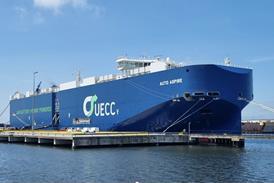
The global strategic alliance between Fiat and Chrysler, in which Fiat currently holds a 20% stake in Chrysler in return for the US carmaker’s access to Fiat's fuel-efficient vehicle technologies, is unlikely to bring any substantial change in the sourcing of local content but it could bring in a higher percentage of local LSPs, according to Chrysler.
The alliance, in which Fiat has the potential to increase its share to 35% if it meets certain performance goals, could see the companies share more than two-thirds of suppliers by 2014. It will give those suppliers the opportunity for greater volumes but will concentrate on parts sharing and not the sharing of LSPs responsible for moving those parts. Chrysler told Automotive Logistics that this is unlikely to have a significant impact on its US-based suppliers.
According to Chrysler’s spokesman Max Gates, “supplier consolidation does not mean the same thing for all areas of our business. Certain areas, such as logistics, by the very nature of the services provided, may lend themselves to a higher percentage of local suppliers rather than common suppliers between the two companies,” he said.
As part of the arrangement, Chrysler will gain access to Fiat's distribution network in "key growth markets" outside the US and its global supplier base. However, this does not mean a migration away from established suppliers.
Key to Chrysler’s new procurement strategy is supply base optimisation “driven through an aligned Chrysler-Fiat Group Purchasing Organization, as well as component sharing”. Shared supply will increase from 52% next year to more than 65% by 2014.
Talking about the plans for supplier consolidation a Chrysler spokesperson clarified: “Just because we will be collaborating with Fiat, that does not mean what we will be using Italian suppliers to the detriment of US suppliers. We will be looking at all suppliers and awarding business based on global capability. It will be a ‘meritocracy’.”
Chrysler plans to share three platforms with Fiat, increasing its average models per platform from two in 2010 to three in 2014. Average volume per platform will increase to 305,000 units from 125,000.































